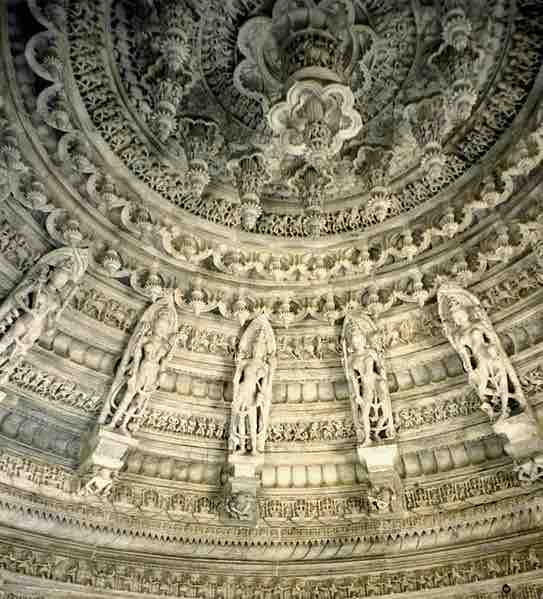Jainism
Jainism is a transtheistic religion prescribing non-violence toward all living beings. It originated in the Indian subcontinent in the 6th century BCE. Its founder Mahavira (c. 540–468 BCE) was born into a royal family but renounced worldly life to become an ascetic and establish the central tenets of Jainism.
Jainism found favor with the merchant classes and also with several powerful rulers. Chandragupta Maurya (born c. 340 BCE, ruled c. 320–298 BCE), the founder of the great Maurya Empire, had succeeded in conquering almost the entire Indian subcontinent; however he abdicated his throne at the age of 42 to become a Jain monk. Samprati, also an emperor of the Maurya dynasty and the grandson of Ashoka the Great (304–232 BCE) also became a Jain. Both Chandragupta and Samprati were responsible for spreading Jainism in southern and eastern India.
Jain Architecture
Modern and medieval Jains built many temples, especially in western India. The earliest Jain monuments were temples based on the Brahmanical Hindu temple plan and monasteries for Jain monks. For the most part, artists in ancient India belonged to non-denominational guilds who were prepared to lend their services to any patron, whether Hindu, Buddhist, or Jain. Many of the styles they used were a function of the time and place rather than the particular religion. Therefore, Jain art from this period is stylistically similar to Hindu or Buddhist art, although its themes and iconography are specifically Jain. With some minor variations, the western style of Indian art endured throughout the 16th century and into the 17th century. The rise in Islam contributed to the decline of Jain art but did not result in its total elimination.
Udayagiri and Khandagiri Caves
Among the earliest Jain monuments are the Udayagiri and Khandagiri Caves, located near the city of Bhubaneshwar in Orissa, India. These caves are partly natural and partly manmade and were carved out as residential blocks for Jain monks during the reign of King Kharavela of Kalinga (193–170 BCE). The caves bear inscriptions and sculptural friezes depicting Tirthankaras, elephants, women, and geese.
The Dilwara Temples
Built under Chalukya rule in Rajasthan between the 11th and 13th centuries CE, the Dilwara Temple complex consists of five ornately carved marble temples, each dedicated to a different Tirthankara. The largest temple in the complex, the Vimal Vasahi Temple, was built in 1021 and is dedicated to the Tirthankara Rishabha. Among its most remarkable features are the rang manda, a grand hall supported by 12 pillars and surmounted by a breathtaking central dome, and the navchowki, a collection of nine rectangular ceilings, also richly carved. The pillars in the main hall are carved into the likenesses of women playing musical instruments and the 16 vidyadevis, or goddesses of knowledge; each holds a symbol representing her individual branch of learning.

Domed ceiling detail
This image shows the interior of a richly carved marble dome in the Dilwara Temple complex representing Jain Tirthankaras.